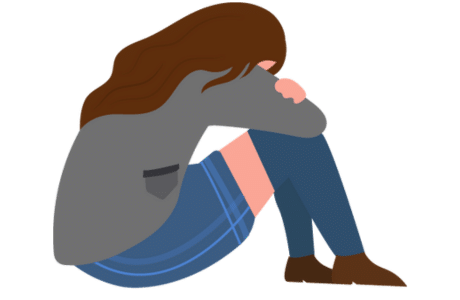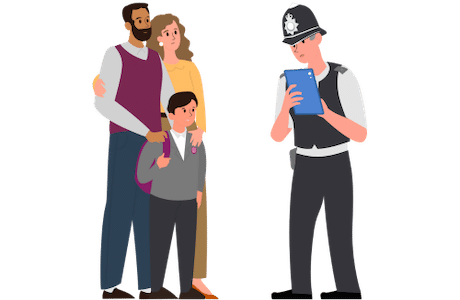Guest Author: Jon Trew
The Child Safeguarding Practice Review Panel’s Annual Report for 2023 to 2024 provides a comprehensive analysis of serious child safeguarding incidents in England, focusing on patterns, key messages and recommendations for improving child protection systems.
The fifth annual report, published on 12 December 2024, examines serious child safeguarding incidents reported between April 2023 and March 2024. It analyses:
- 330 Serious Incident Notifications (SINs)
- 82 Local Child Safeguarding Practice Reviews (LCSPRs)
The report identifies national patterns and areas for improvement in safeguarding practices.
What Is the Role of Schools in Safeguarding?
While much of the report is clearly aimed at investigating agencies, there is much that schools can learn from the report. Research on adult survivors of childhood abuse by Allnock and Miller in 2013 showed that teachers were the group of adults to which children were most likely to disclose abuse. However, the review identified that teachers, and those working with children and families, had not been equipped with the tools to effectively respond to concerns about child sexual abuse.
The report provides some important statistics on child sexual abuse in England & Wales based on Allnock and Miller’s research:
- At least 500,000 children in England and Wales are sexually abused each year.
- At least 1 in 10 children will be sexually abused before the age of 16.
Understanding Intrafamilial Child Abuse
The research in the Child Safeguarding Practice Review report shows that sexual abuse within the family environment starts at an earlier age and is often continued over a longer period than when the offender is outside of the family. Intrafamilial abuse is also linked with other types of sexual offences, in particular the production and distribution of child abuse material. Typically, girls were three times more likely to disclose abuse than boys, while disabled children were found to be twice as likely to be sexually abused than non-disabled children.
Which Children Face the Highest Risk of Abuse?
Child victims of abuse are also more likely to be victims of other types of abuse and the report also found that out of 330 incidents of death or serious harm occurring in 2023 to 2024, nearly half of the children in focus had experienced physical abuse previously.
- The most frequent types of abuse are emotional abuse and living in an environment where domestic abuse takes place.
- Child victims of neglect are 3x more likely to be victims of sexual abuse.
- Children living in households where drug and alcohol are misused are also 3x more likely to become victims of abuse.
Why Children’s Abuse Goes Unreported
The ‘I wanted them all to notice’ report published by The Child Safeguarding Review Panel November 2024 gives key insights into how serious child abuse is reported and responded to by safeguarding agencies and professionals. The report identified that in many of the cases examined, professionals had failed to create sufficient opportunities for the child to tell them what was happening in their lives.
This certainly aligns with my experience in safeguarding training, where many teachers and other educational professionals are uncertain of what can be said to children where they suspect abuse, especially when it is of a sexual nature. Many teachers are concerned that they may infringe upon the role of social workers and the police, and are reticent to talk directly to children about abuse. The report says:
“Overwhelmingly, practitioners are relying on children to verbally report their abuse before taking action, which has particular implications for pre-verbal and non-verbal is happening to them and are sometimes not believed when they do tell.”
Key Concern: three quarters of the abused children in the review were not listened to, or were disbelieved when they did attempt to disclose.
The report identified that many of the adults around the child who should have been supportive did not understand what grooming was and how coercive control worked and how it impacted upon the child.
Children with disabilities were further disadvantaged because in many cases professionals confused the signs of sexual abuse with the effects of the disability. Furthermore, not enough consideration was given for their ability to communicate and engage with the people around them.
The Importance of Information Sharing & Evidence Understanding
The ‘I wanted them all to notice’ report displays that practitioners often did not understand guidance on information sharing and consent. Information sharing between and across agencies, particularly with regards to safeguarding both outside and inside the home, was a key theme of the recently published Keeping Children Safe, Helping Families Thrive policy paper. This was also identified as a particular problem in the Safeguarding Practice Review Report, as in one third of the cases included, the abuse was caused by a family member with a known history of sexual offending.
Staff members often exhibited a lack of understanding about the level of evidence needed to bring charges. This led many individuals to believe that no offence had occurred and therefore the child was left unsupported and disbelieved.
The report says:
“We saw repeatedly that when police had decided to take no further action due to the high evidential threshold for criminal proceedings not being met, children’s social care and other agencies often understood this to mean that the child had not been sexually abused and that there were therefore no safeguarding concerns or other actions needed.”
Key Takeaways for Schools & Educational Settings
To strengthen safeguarding, staff training should focus on:
- Clearly explaining the difference between investigating child abuse (the role of the Police and Social services) and the role of teacher supporting and offering children emotional guidance and support giving them the time and space to disclose.
- Clarifying that it is not the role of the teacher to decide if a child’s disclosure is true or false but one to record and report.
- Providing understanding about the difference between evidential proof in the courts (beyond reasonable doubt) and social services investigations, and that while charges may not have been brought that does not mean an offence has not occurred.
- Ensuring that the signs and symptoms of child sexual abuse that are monitored are not limited to physical abuse, but also the emotional and behavioural signs that the child and those around them may display.
- Explaining the nature of grooming and coercive control on children and young people.
- Considering the additional vulnerabilities of groups of children, such as those with a disability of those from a minority group, which may decrease opportunities to disclose abuse.
How Safeguarding Technology Can Help
The 2023 to 2024 Annual Report by the Child Safeguarding Practice Review Panel, along with the ‘I wanted them all to notice’ report underscores the critical role that schools and educational settings play in the safeguarding landscape. CPOMS StudentSafe provides powerful tools to support all professionals working with children in fulfilling their essential role in safeguarding. With customisable categories of concern, detailed chronologies for every student and integrated body map reports, StudentSafe ensures that every concern is captured so that indications of abuse can be acted on faster.
The Child Safeguarding Practice Review Panel’s reports show that information sharing between settings and agencies at the local authority is a vital step in providing effective protection for all children and young people. CPOMS Engage helps to connect education settings and agencies digitally, allowing them to securely share essential information for the welfare of children. Local Authorities can also provide direct visibility of domestic abuse incidents received from Police, providing a holistic approach to safeguarding for every student.
To learn more about how CPOMS StudentSafe and Engage can support your setting’s child protection policies, book a free demonstration today.




